Locals mount grassroots resistance to mega-warehouse blitz
As e-commerce giants scale up and up, neighbors band together to fight over-development
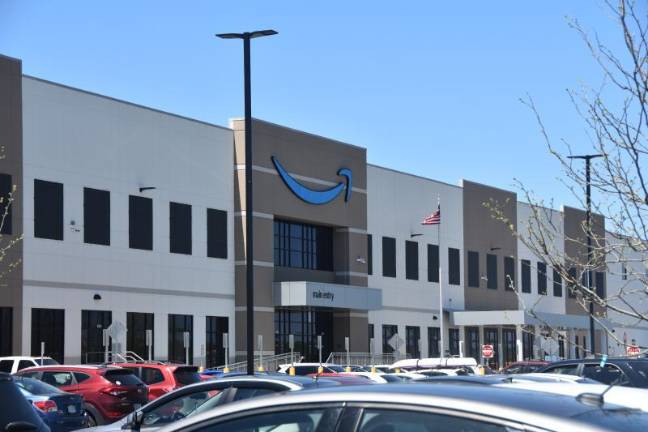
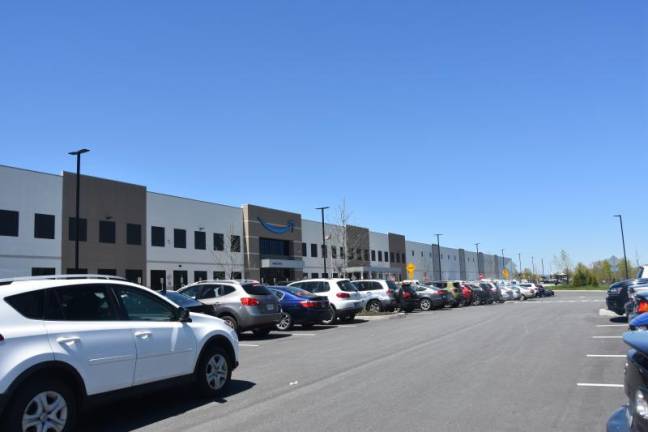
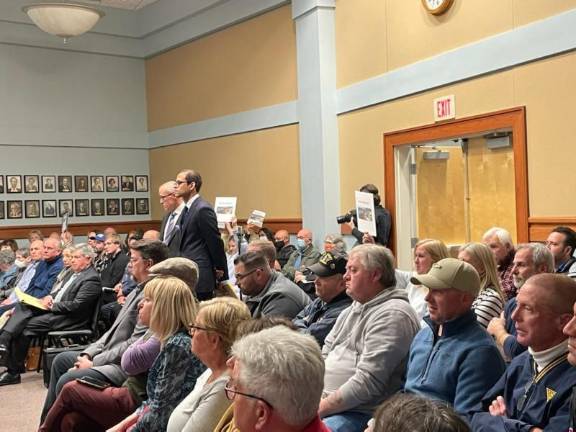
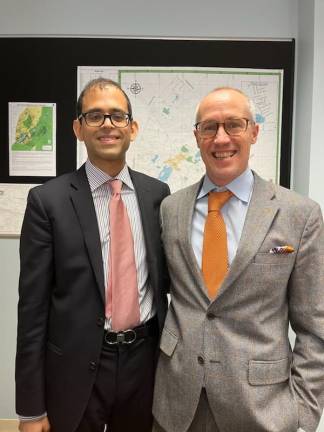
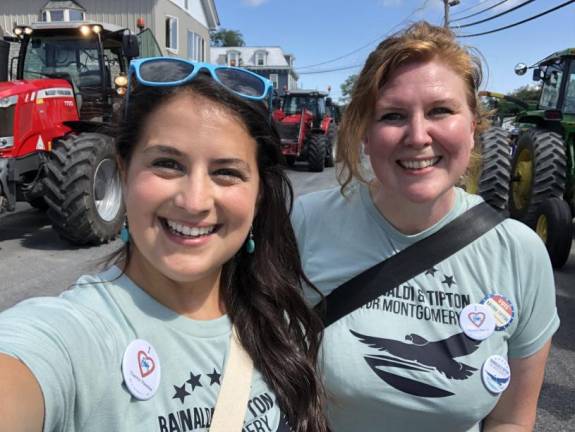
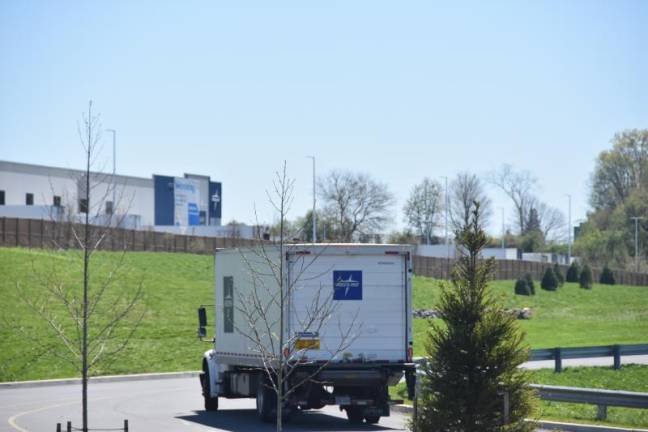
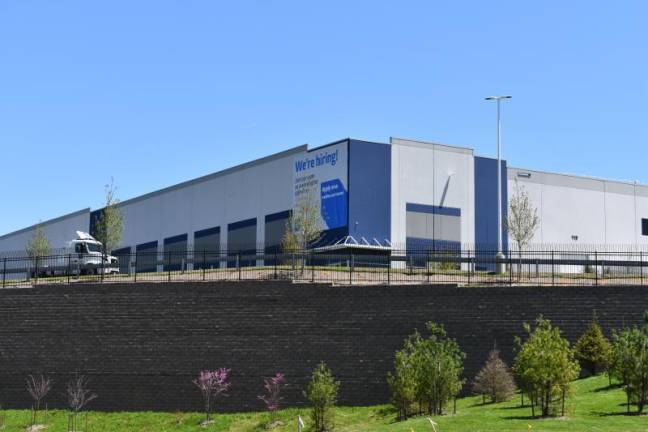
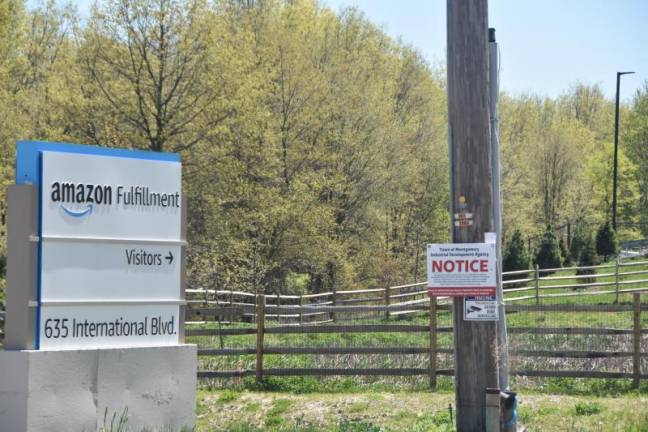
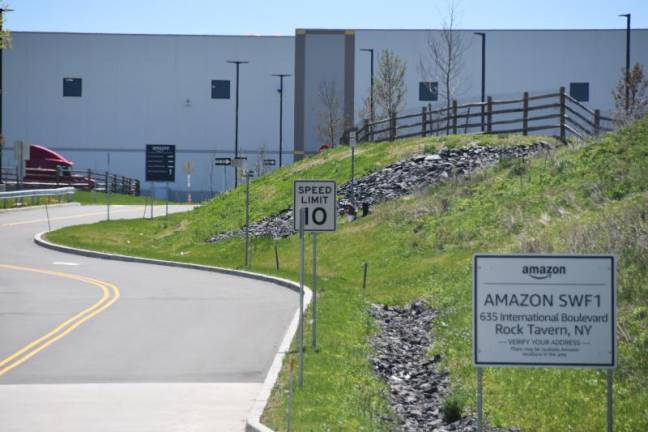
Amazon’s million-plus-square-foot warehouse in Montgomery, NY, was the biggest building in Orange County when it opened last year. Not for long. The Everything Store’s buzzy new fulfillment center, which employs about 1,000 people, has already been dwarfed by an even huger, 1.3-million-square medical supply warehouse in the same town. Medline’s LEED-certified warehouse occupies 30 acres under one roof – a roof that will be topped by more than 18,000 solar panels by year’s end. Box trucks and semis lumber in and out of the security gates, carrying pretty much everything used in hospitals and nursing homes, from furniture and fixtures, to surgical packs and personal protective equipment.
“The viewshed of our town, actually the entrance to our town, is a warehouse. And that was a working farm and it was beautiful, and it’s gone forever. There’s no getting it back,” said Sylvie Rainaldi, 38, a hospital finance consultant and member of Residents Protecting Montgomery, a grassroots group that mobilized when Amazon and Medline first came knocking about five years ago.
Built on 118 acres of former farmland, the Medline warehouse would have been among the largest structures on earth a few years ago. Now, mega-warehouses like these are mushrooming up all over the country, concentrated near the intersections of major arteries. They’re also popping up in leafy, quiet, well-to-do suburbs like Sparta, NJ, which is busy mounting its own people’s resistance to a developer’s plans for an 890,000-square-foot, six-story warehouse with 181 truck bays.
“We’re as far out in Northwest Jersey as you can be. The infrastructure is not there. They’ve found themselves in the wrong county,” said Anand Dash, a lawyer in Sparta who has become part of that town’s resistance, helping form the nonprofit Sparta Responsible Development to raise money for expert testimony to counter the developer’s.
It’s not that they’re anti-warehouse, said Dash. “Without warehouses in New Jersey, you know, most of us wouldn’t have a lot of what we have,” he said. But the new generation of mega-warehouses are a different story. “These are disproportionally sized, industrial buildings that have components of rail attached to them. You don’t need an expert to figure out that it doesn’t complement the character of certain rural towns, right? It’s not that there’s a standing prohibition against warehouses of any size. It’s predominantly logistics centers, intermodal facilities, that are really designed to be located along ports, waterways, canals, like Chicago or the port of Newark.”
The changing face of rural towns
Once a farm town, it’s now fair to call Montgomery “a very heavy-industry town, and we still love being a farm town as well,” said Montgomery Town Supervisor Brian Maher.
“It is absolutely because online purchasing has exploded,” he said. The “desperate push” by e-commerce players for more and larger warehouses has been underway for years, he said, the inevitable result of our proclivity for one-click shopping and ever-higher expectations for speedy delivery. Inconsequential as each click feels, en masse all those orders have drastically altered our built environment in a few short years, from the hulking structures themselves to the leveling of unbuildable hilltops to the local roads that need to be widened to accommodate thousands of extra trucks.
Having built up Pennsylvania – appealing for its lower taxes – corporate developers are looking east, said Maher. “You could do smaller warehouses throughout the Northeast. You could find a small spot to put a 40,000-square-foot [facility], but there aren’t that many locations in the tristate area to put a one-million-square-foot-warehouse, and really that’s the new model.”
Enough now
Three of Montgomery’s warehouses will soon break the million-square-foot frontier, with the expansion of the existing Cardinal Health warehouse to 1,341,000-square-feet. But that will likely be the last warehouse of its size to go up in the town.Residents Protecting Montgomery’s major victory is an updated master plan, a tedious sounding bit of bureaucratic housekeeping that actually has massive implications. By protecting environmentally sensitive areas, residential areas and schools, it will make it harder for mega-developments to go through in the future. Montgomery’s boots-on-the-ground mobilization can also serve as a real-world blueprint for other towns, like Sparta, to follow.
“Changing our zoning pretty much said, you’ve got to look for another location,” said Maher. “We were able to say hey, we could have a couple more million-square-foot warehouses, or we could change our zoning and not allow for them, and take the gamble and wait. And we’re going to see if we can get something that’s not just a warehouse, but something that’s going to yield higher-paying jobs. So we consciously changed our zoning to allow these different businesses to come in, knowing full well there’s no market for it yet.”
The grassroots resistance scored another win when Rainaldi – who has a degree in healthcare policy – volunteered her way onto the Industrial Development Agency, not just suggesting changes but actually writing out the language. “We increased tax incentives for agricultural industry, because we’re an agricultural town. Wasn’t that, like, aligning our incentives to what we want?” she laughed. “And we reduced tax incentives for mega-warehouses.”
Rainaldi considers some of these changes baby-steps: better than nothing, but a far cry from what they wanted.
Still, something major has happened along the way. “Our town has come together, and we have a more effective way to mobilize because we’ve done it a few times,” she said. “We started out screaming and yelling because you have so much emotion,” she said, but then managed to pivot. “Our goal is not to be screaming and shouting but actually effect change: get on committees.” Between Tipton’s spot on the Comprehensive Plan Committee, Rainaldi’s own work with the Industrial Development Agency, and a few other well-placed allies, “we have a seat at the table, a real seat.”
Tax dollars, jobs and ‘the multiplier effect’
When Maher took office in 2020, bucolic Montgomery was already ground zero of the construction boom, with Amazon approved and Medline on the finish line. He had heard residents express warehouse fatigue loud and clear on the campaign trail. “I absolutely am the type of person when I go door to door for an election and I hear people say hey, we have too many warehouses, I take that seriously,” he said.
But in an evolution some of his constituents see as disloyal, he has come to appreciate what these corporate juggernauts can do for the region. The Orange County Partnership, an economic development group, trumpeted the Medline and Amazon warehouses as “an epic success story for the Town of Montgomery,” in a flier for a fundraiser honoring Maher as “most valuable partner” in 2022.
With more than 30 warehouses in town, he said, “we’ve got a great revenue-builder for our tax base.” Residents criticized the the town’s decision to award the Amazon warehouse $21.5 million in tax breaks while their own taxes have not budges in years, but it’s not that simple, said Maher. The costs of running a public school system and local government have gone way up, he said, and without the commercial sector, “taxes for homeowners would be astronomically more expensive than they are now.”
Mega-warehouses can bring in customers for local businesses from the bakery to the gas station, particularly if someone like him is vigilant about forcing the issue, said Maher. When Amazon and Medline started construction, the town asked them not to bring in food trucks, but to work with pizzerias and restaurants to feed the workers, he said, and the companies did. They went to the local hardware store instead of ordering supplies online, “opened an account with them and knew people’s first names and became friends,” said Maher. “If you don’t have that and elected officials aren’t holding companies’ feet to the fire, there is less value, there absolutely is less value. But if you use the Montgomery model, and the relationships we created with Amazon and Medline, there’s a multiplier effect that impacts our community in so many ways that people just don’t realize.”
Perhaps the biggest selling point is the jobs these companies bring, no college degree required. Based on the number of help wanted signs plastering the industrial corridor, there are plenty available.
The oft-maligned warehouse jobs are getting more attractive by necessity, to lure employees in a jam-packed job market. “Because these warehouses are coming so close to each other, the workforce is not quite there, which means, in order to retain and attract employees, they need to pay them more,” said Maher. Starting salaries for a warehouse job are now as high as $20-plus dollars an hour, he said. “If you work enough overtime and you move up in positions quite quickly — it’s a lot of work and sometimes it can be unsafe, like many jobs we have – but if you work at it, you can make more than me as town supervisor in a warehouse job.” Maher makes $79,000 as town supervisor.
The gutting of Main Street
Whether these companies will be able to staff all the way up remains an open question, not only here in the Northeast, but in the exploding network of warehouses across the country. “Even if the pay was great, and everyone could afford to live here, there aren’t 800 people in Montgomery who need warehouse jobs,” said Barbara Lerner, who sued in an unsuccessful challenge to Amazon’s warehouse development in 2020.
“These are commuters. They stop on their way in for a coffee, a bagel, maybe a slice of pizza for lunch if that, then they’re gone, they go back home to wherever they live, and that is where they shop, that’s where they spend their money.”
Though she and her friends make a point of shopping local, Lerner is aware they are in an increasingly vanishing minority. “Amazon kills small business, we all know that, from your grocery store to your feed store to your clothing store to your bookstore to your pharmacy,” said Lerner. “If you can get everything delivered to your door, never have to step out, you never meet your neighbors, you’re not supporting your community. Everything that you buy at your local hardware store, you can have delivered next day by Amazon,” she said. “Your shoes, your clothes, your groceries. It’ll all be delivered right to your door.”
To stay or go?
While working from home, where she’s been stuck with a case of Covid, Tipton has been looking out her window, nervously, at a field that people have been going in and out of a lot over the last week – surveyors? “I just said to my husband this morning, I don’t know where you can move right now where you wouldn’t be impacted by this massive development. It’s happening everywhere in America. I think it’s very tempting. I have some friends who’ve moved away in part because of the development. I just don’t know where to move where you can get away from it.”
Rainaldi, meanwhile, isn’t going anywhere, even though what’s happening to her town saddens and worries her. “There are parts of Montgomery that are really, like, forever changed,” from the views and water quality to the increased truck traffic and noise. “When you have children and they’re playing outside, that’s not just an inconvenience, that really affects your quality of life,” she said.
Still, there’s no such thing as a perfect town, and of all the places in the world, this is the one she and her husband chose to move back to from the city. “I’m not someone who gives up when the winds change. I think the town has made changes on what it wants in the future. I believe in that plan,” she said. “I bought my house here. When my husband grew up in Montgomery, it was never just an option to leave, it’s just – work harder to make it right.”
As e-commerce giants scale up and up, neighbors band together to fight over-development.